Diversity, equity, and inclusion (DEI) is key for student persistence, retention, and success.
“Like many other colleges, DEI work has been a huge focal point for us,” says our partner Eric Jacobson, Public Affairs Specialist at Western Technical College.
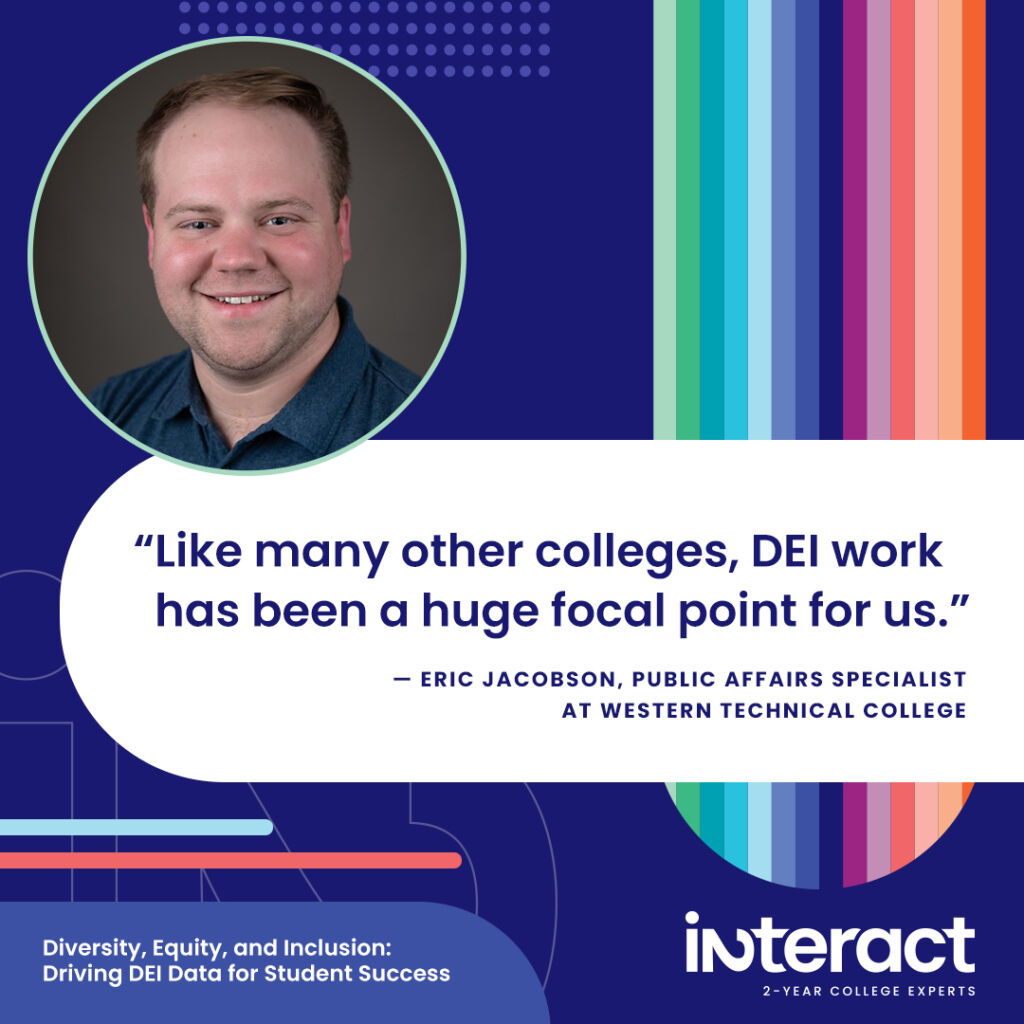
During the pandemic, the college launched a new multicultural center on campus to help increase inclusion. It’s called “The SPACE: The Student Place of Action, Culture, and Empowerment at Western.” Its creation aligns with the latest diversity, equity, and inclusion best practices:
Western’s video of The SPACE shows equity in action!
The SPACE is where students come together for advocacy as well as educational and intercultural programming. The center aims to include historically underrepresented learners, including BIPOC students, students who are parenting and caretaking, and students from the LGBTQIA+ communities. The center is also the DEI consulting body for the college’s employees, helping faculty and staff grow their equity mindset and integrate this thinking in all they do.
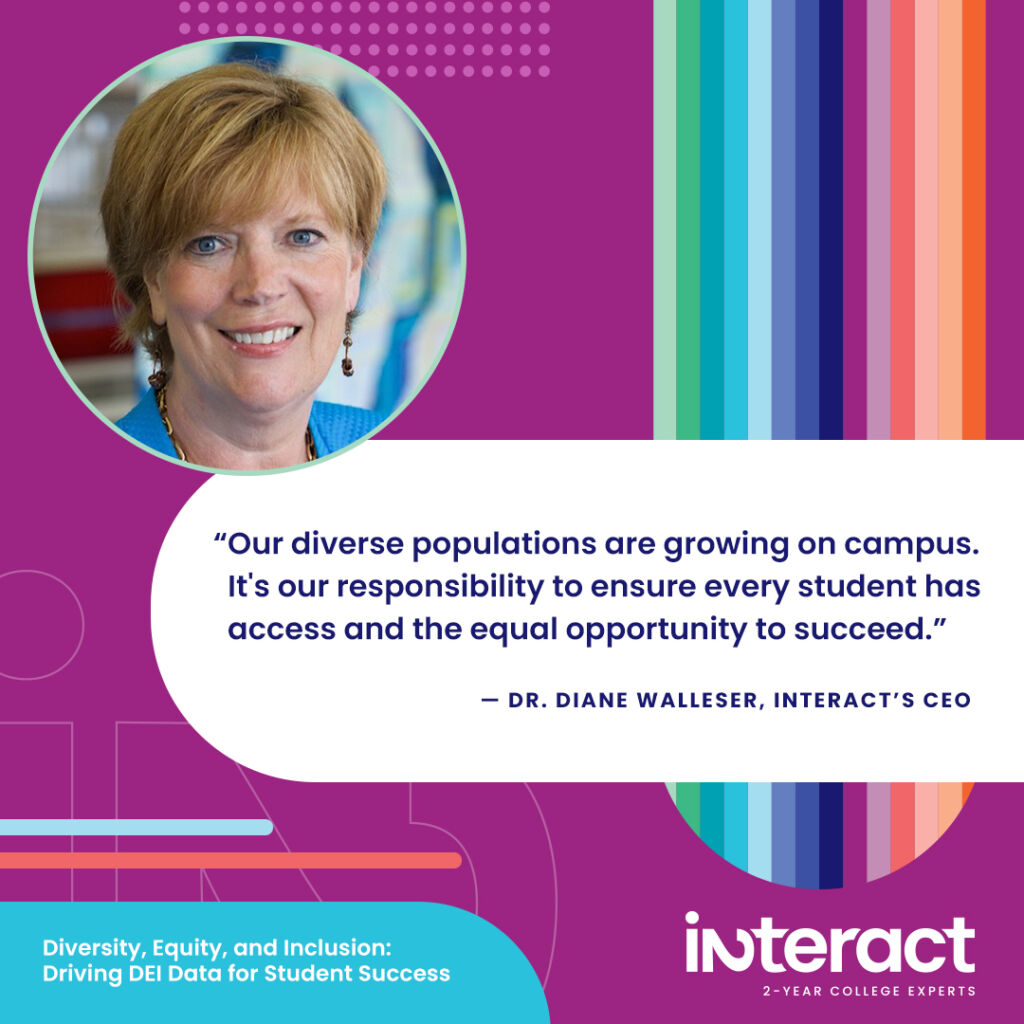
“Our diverse populations are growing on campus,” says Interact’s CEO, Dr. Diane Walleser. “It’s our responsibility to ensure every student has access and the equal opportunity to succeed.”
In particular, inclusion has become increasingly essential in helping students thrive. Here’s why:
Why Inclusion Matters in Higher Education
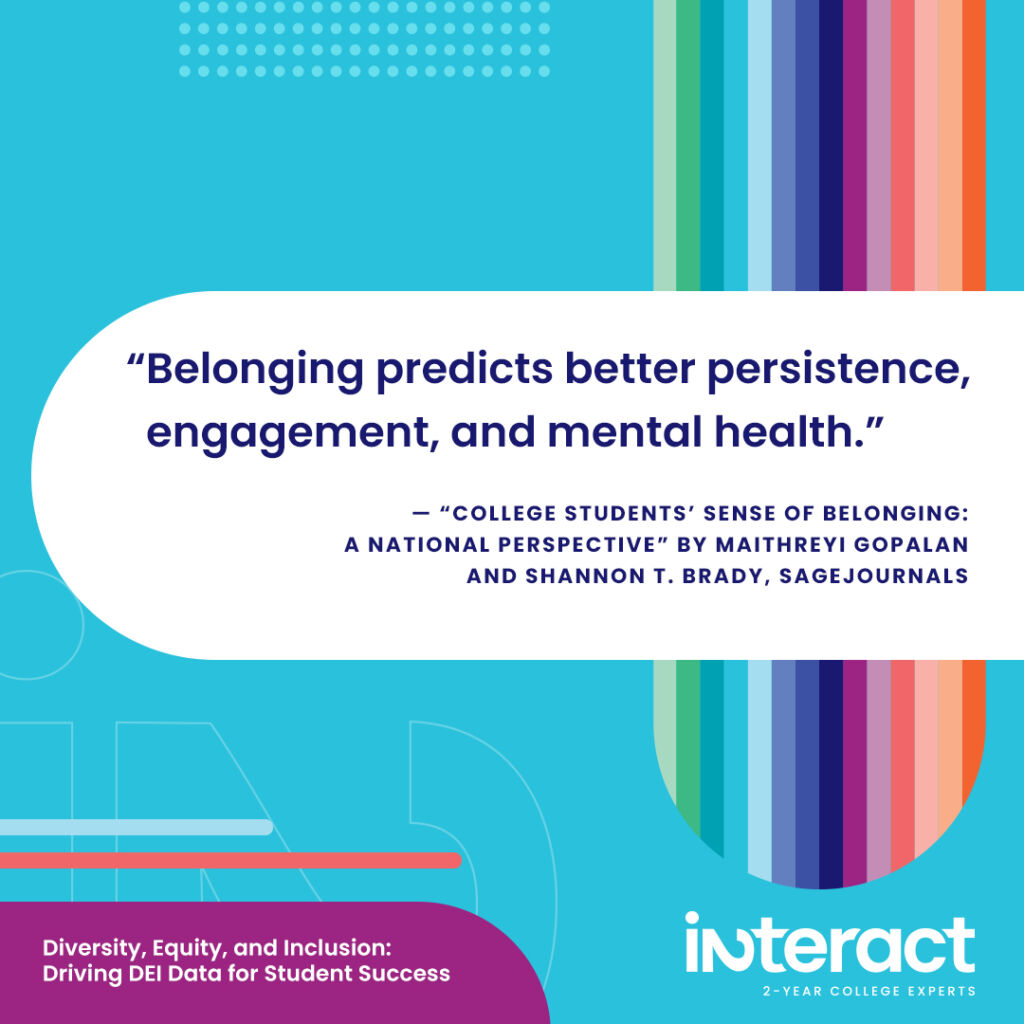
The scholarly article “College Students’ Sense of Belonging: A National Perspective” says, “Belonging predicts better persistence, engagement, and mental health.”
While a feeling of belonging varied across the surveyed colleges, historically underrepresented students reported a lower sense of belonging across the board at 4-year schools, while 2-year institutions had better results.
Meanwhile, the Journal of Adolescent Health explored “College Students’ Sense of Belonging and Mental Health Amidst the COVID-19 Pandemic” with some telling outcomes for DEI.
“Despite reporting high levels of belonging pre- and post-COVID, consistent with past research, underrepresented racial/ethnic minority/first-generation students reported a relatively lower sense of belonging compared to peers,” says the article.
This finding was critical, as the research found that a sense of inclusion helped to buffer feelings of depression and anxiety during the pandemic. The paper concludes, “College students’ sense of belonging continues to be an important predictor of mental health.”
How can you put inclusion at the forefront of your DEI efforts? Just ask Western Technical College!
But first, let’s get into the nitty-gritty of what diversity, equity, and inclusion really means.
DEI and the 4-1-1 on Building an Inclusive Campus
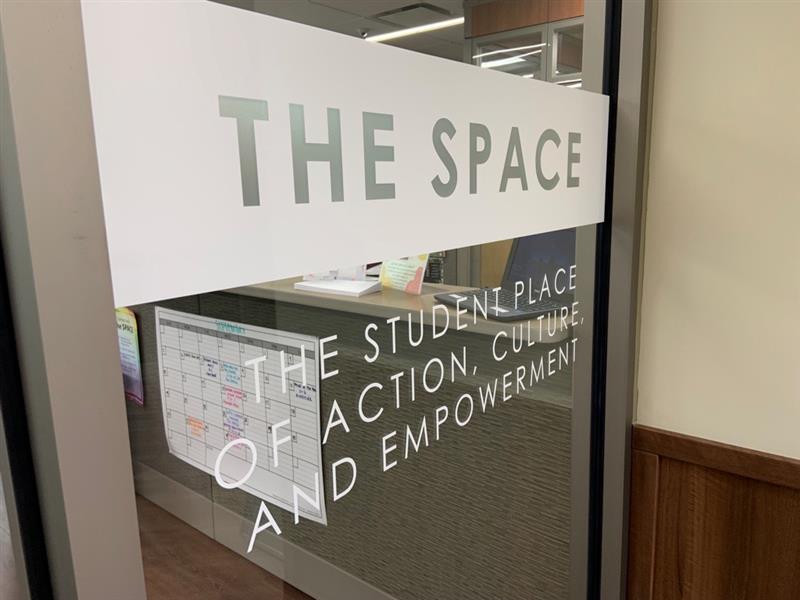

Photos of students enjoying The SPACE!
Before we dive into inclusion, it’s useful to take a bird’s-eye view of DEI with some helpful definitions.
According to the digital inclusion platform InclusionHub, DEI is the “symbiotic relationship … and culture of acknowledging, embracing, supporting, and accepting those of all racial, sexual, gender, religious, and socioeconomic backgrounds, among other differentiators.”
Additionally, the University of Michigan states, “We know that talent is distributed across all communities, but opportunity is not.”
For the university, removing students’ educational barriers helps create a diverse community, enriching the learning environment for everyone. U-M’s goal is a campus “where differences are welcomed, different perspectives are respectfully heard, and where every individual feels a sense of belonging and inclusion.”
Similarly, Western’s DEI statement shows the college is “committed to providing students from all backgrounds and academic levels an accessible, inclusive, and equitable learning environment.” Their new SPACE is a big part of moving the needle on this mission.
But how is the college ensuring the new center’s success? The secret is research!
Boosting Inclusion: Tracking the ROI on DEI
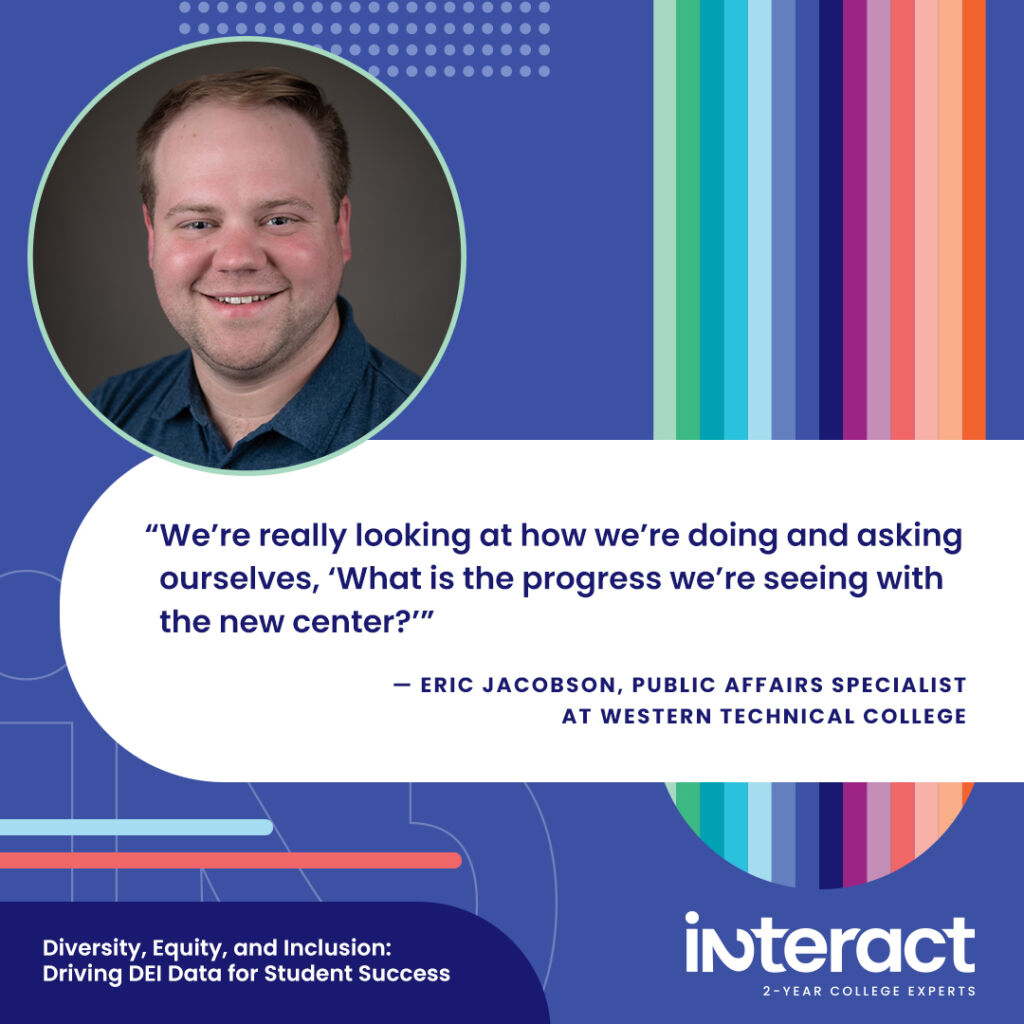
“We’re really looking at how we’re doing and asking ourselves, ‘What is the progress we’re seeing with the new center?’” says Jacobson.
The best way to find out was to ask students directly through Interact’s Media Prefs survey. Western crafted four custom survey questions to help gauge the success of their diversity, equity, and inclusion efforts.
Here are the statements they asked students to rate:
- I feel comfortable being myself at Western.
- I feel that Western values me as a student.
- I feel like I’m a part of the Western community.
- I feel like I belong at Western.
The college has been polling students about these issues for two years and counting, and they have found some helpful takeaways.
Do Students Feel Comfortable Being Themselves?
Nearly all students feel that they belong at Western, with almost 95% agreeing with the statement in the most recent survey. When broken down by age demographics, it was revealed that traditional students strongly agreed with this sentiment more than nontraditional students. This insight opened new areas of opportunity for the college:
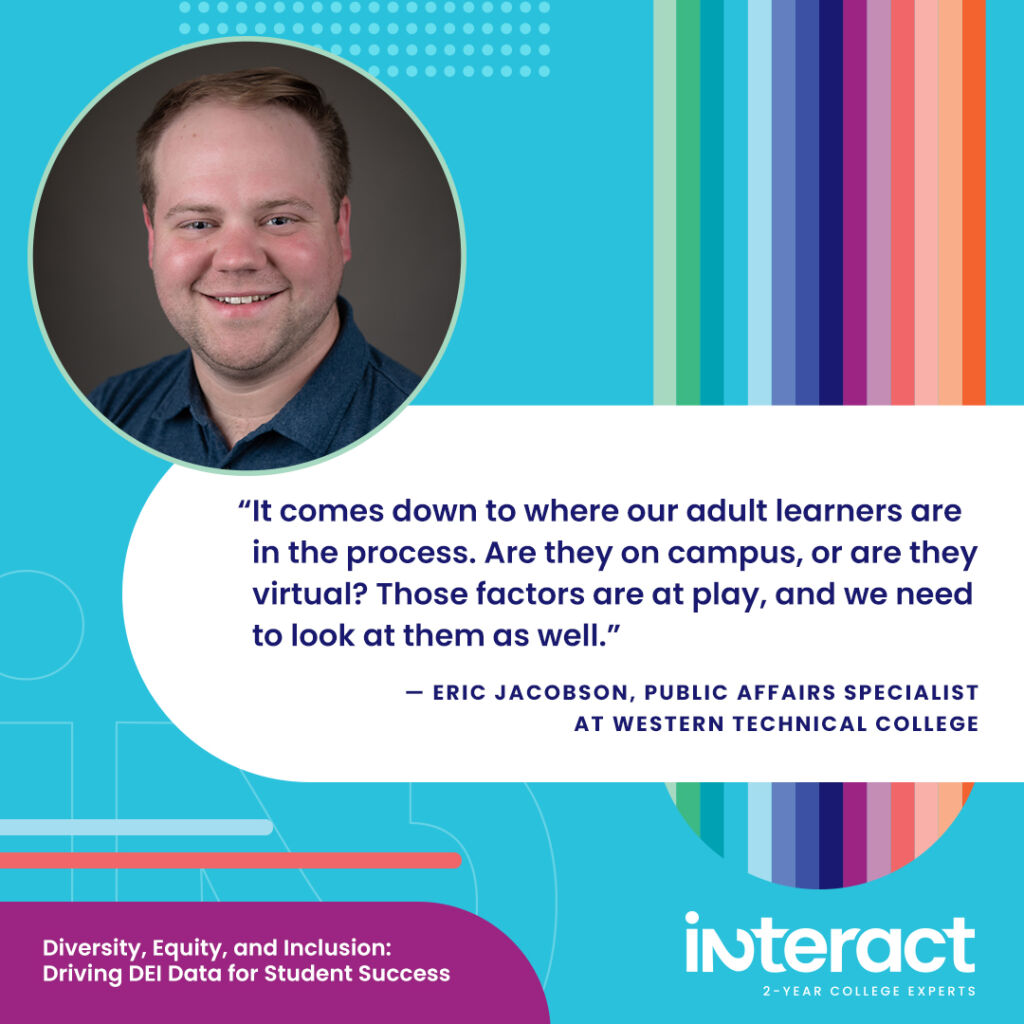
“It comes down to where our adult learners are in the process,” says Jacobson. “Are they on campus, or are they virtual? Those factors are at play, and we need to look at them as well.”
It’s worth asking students if they feel comfortable being themselves on campus and then breaking their responses down by demographics. By investigating the data, you can fine-tune your outreach and retention efforts to ensure that everybody feels like they belong.
Do Students Feel Like They Are Part of the College Community?
Interestingly, the demographics shifted slightly for the statement, “I feel like I’m a part of the Western community.” While 85% of students responded affirmatively, traditional students felt slightly less connected than older ones.
“I think we’re still trying to find what works for traditional-aged students post-COVID,” explains Jacobson.

From preferences about hybrid, in-person, or online classes, to the most in-demand student support and services, the college continues to adjust offerings in line with the data. Jacobson says older students love the newer, more flexible class formats the pandemic introduced. Meanwhile, traditional students crave more in-person instruction and support.
He says, “As we continue to fine-tune the class formats we offer, I think we’ll find that data changing.”
Western’s Biggest Diversity, Equity, and Inclusion Data Takeaway from the Media Prefs Survey
With two years of data in hand, Jacobson says the college has a new long-term goal: increasing the number of students of color who complete the survey.
“We want to work with The SPACE to promote the survey more and get more data,” says Jacobson.
Survey participation for students of color has been a bit low. But Jacobson is gearing up to change that in the school’s next survey cycle.
“The reason we have The SPACE at this new location on campus is to do better outreach,” says the public affairs specialist. “We want that data to help us figure out how diverse students want to interact with us.”
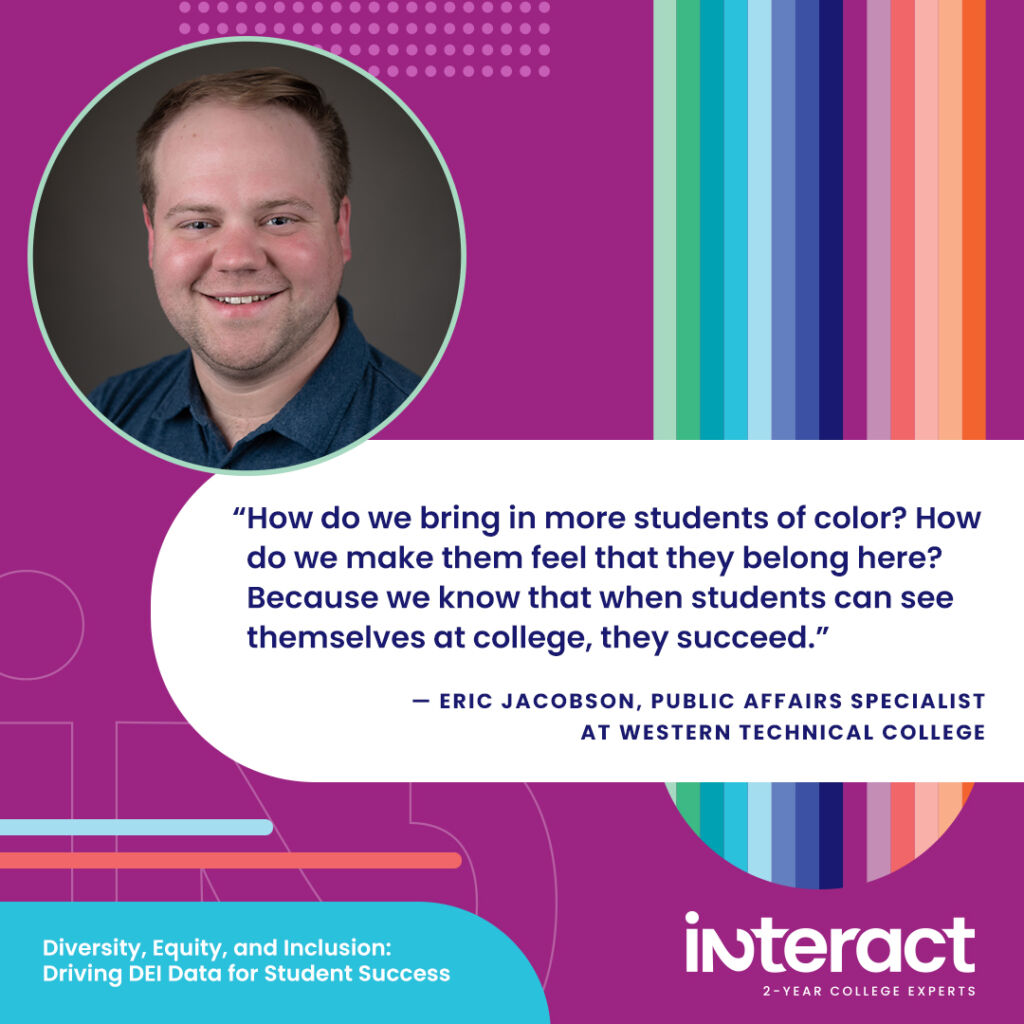
Ultimately, Jacobson knows collecting more diverse student feedback will help bolster enrollment. Jacobson says, “An overall strategic goal of the college is to bring more students of color into the fold.
“How do we bring in more students of color? How do we make them feel that they belong here? Because we know that when students can see themselves at college, they succeed.”
How Custom Data Helps Western’s Enrollment and Retention Philosophy
Jacobson says that Western’s Media Prefs data helps outreach and retention in more ways than one. As the college’s social media administrator, he says the data allows the college to advertise wisely and make every dollar count. But he says there is something even more valuable than knowing if Snapchat or TikTok is the best platform to reach students.

“Media Prefs changes my overall philosophy,” says Jacobson. “It shapes the view we all take as a team on our marketing strategy.”
He says the college’s custom DEI questions help the institution keep its finger on the pulse of student sentiment. Plus, the data allows Western to take stock so they can boldly move forward with their marketing and outreach. He says, “You can take that data to your administration to help justify the moves that you make.”
When it comes to making progress on DEI initiatives, Jacobson says the survey helps ensure that the college’s services and messaging are on point.
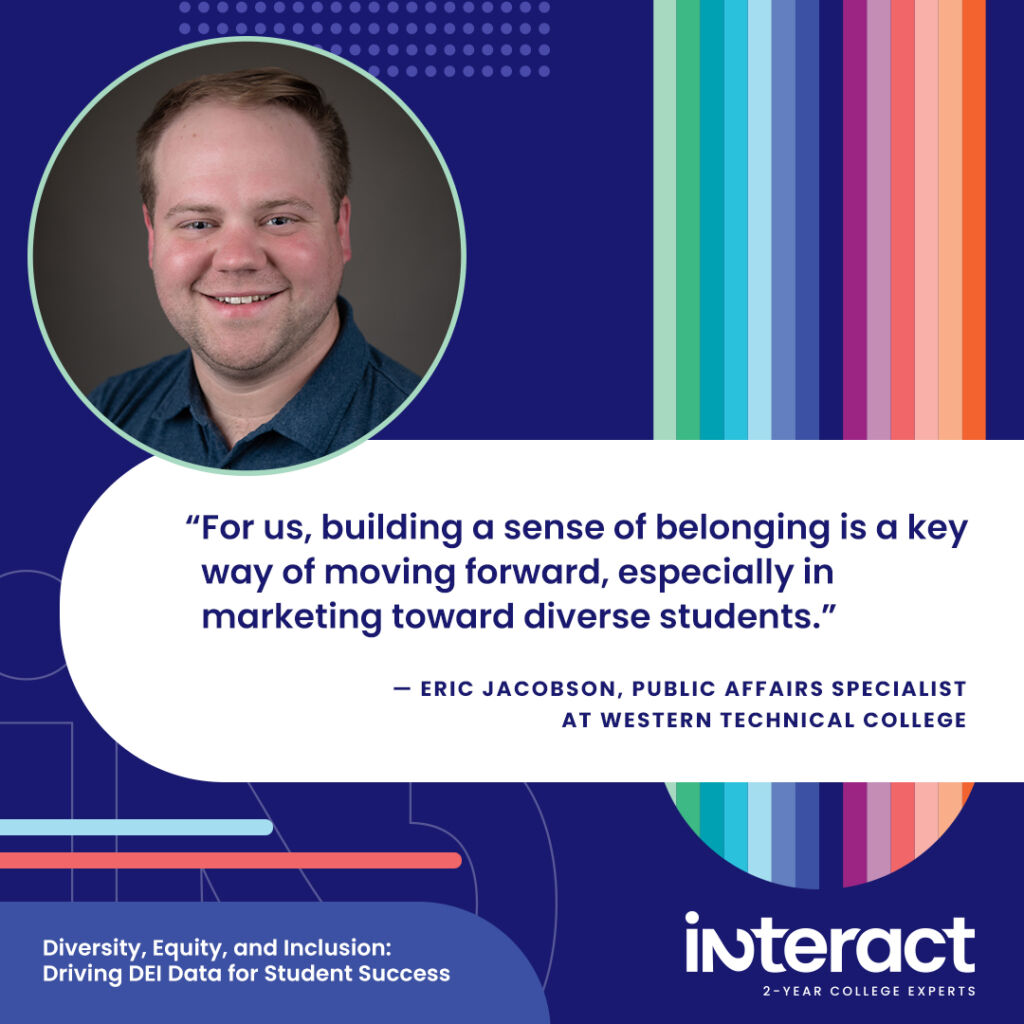
“For us, building a sense of belonging is a key way of moving forward, especially in marketing toward diverse students,” says Jacobson.
Advice to Get the Best Diversity, Equity, and Inclusion Data — and Beyond!
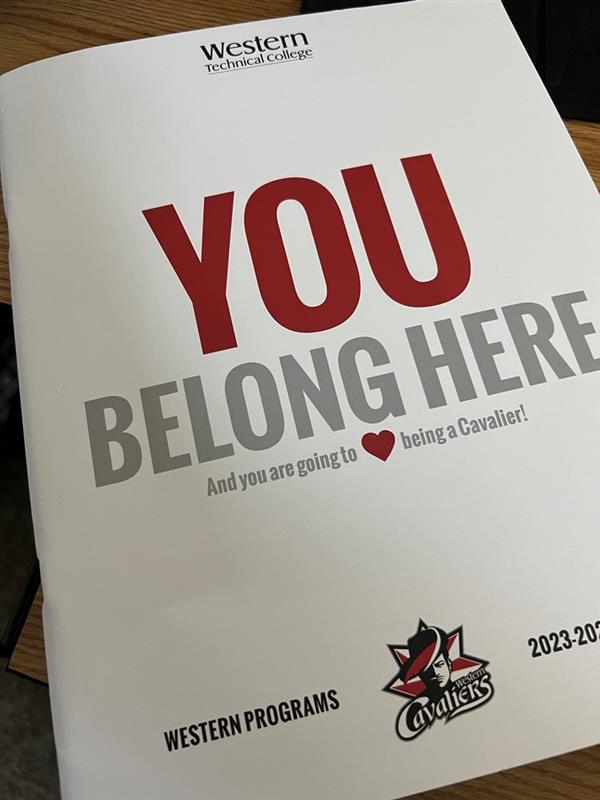
The college’s new viewbook beautifully demonstrates that students belong at Western.
Colleges receive up to five custom questions with their Media Prefs subscription, and those questions can be posed in creative ways. They can be quantitative or qualitative, multiple choice, or open-ended. While we do have question templates colleges can choose from, you can also create your own or choose a mix.
“If you have an issue that’s been on your mind — related or unrelated to Media Prefs content — adding custom questions to your survey is a great way to get student feedback with very little additional effort,” says Jamie Wagner, Executive Director of Media Preferences. “Custom questions appear early on in the survey, so you’ll be sure to get a good sample from your students. Take the opportunity to get the extra data!”
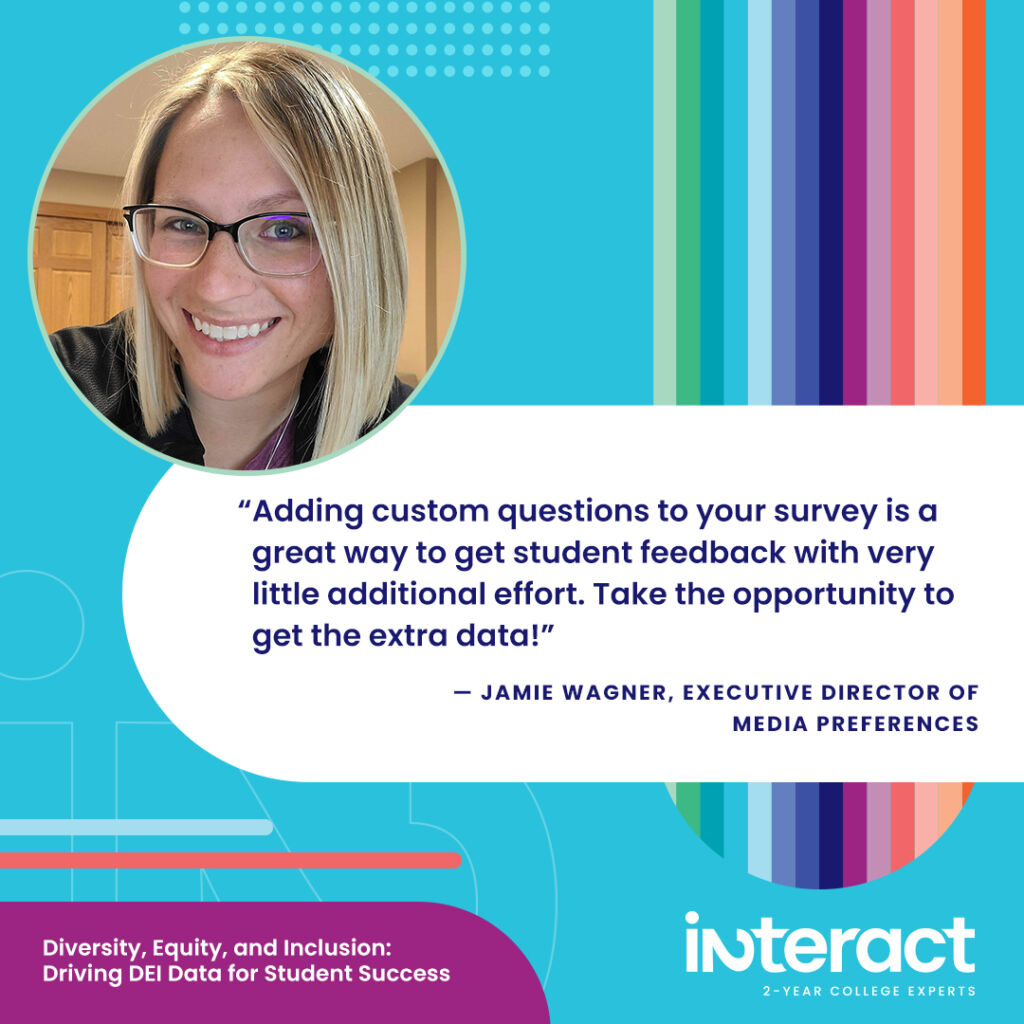
Common custom questions colleges ask, on top of DEI issues, include the following:
- Finding out if students have any educational barriers related to food, housing, or technology
- Asking about college customer service
- Discovering if their high school recommended the college or not
- Leveraging highly specific questions about class schedules or student resources
- Inquiring about unique college initiatives, such as a college podcast, newsletter, or scholarship
- Questions that are distinct to your state, such as state-specific scholarships
Wagner advises that custom questions can help colleges dig deeper into hidden problems and shed light on new solutions. If you see a common theme in your custom question data, it can be a springboard to help your team dive deeper into the issue.
Jacobson says that asking custom questions over multiple survey periods can help your college track students’ experiences on campus.
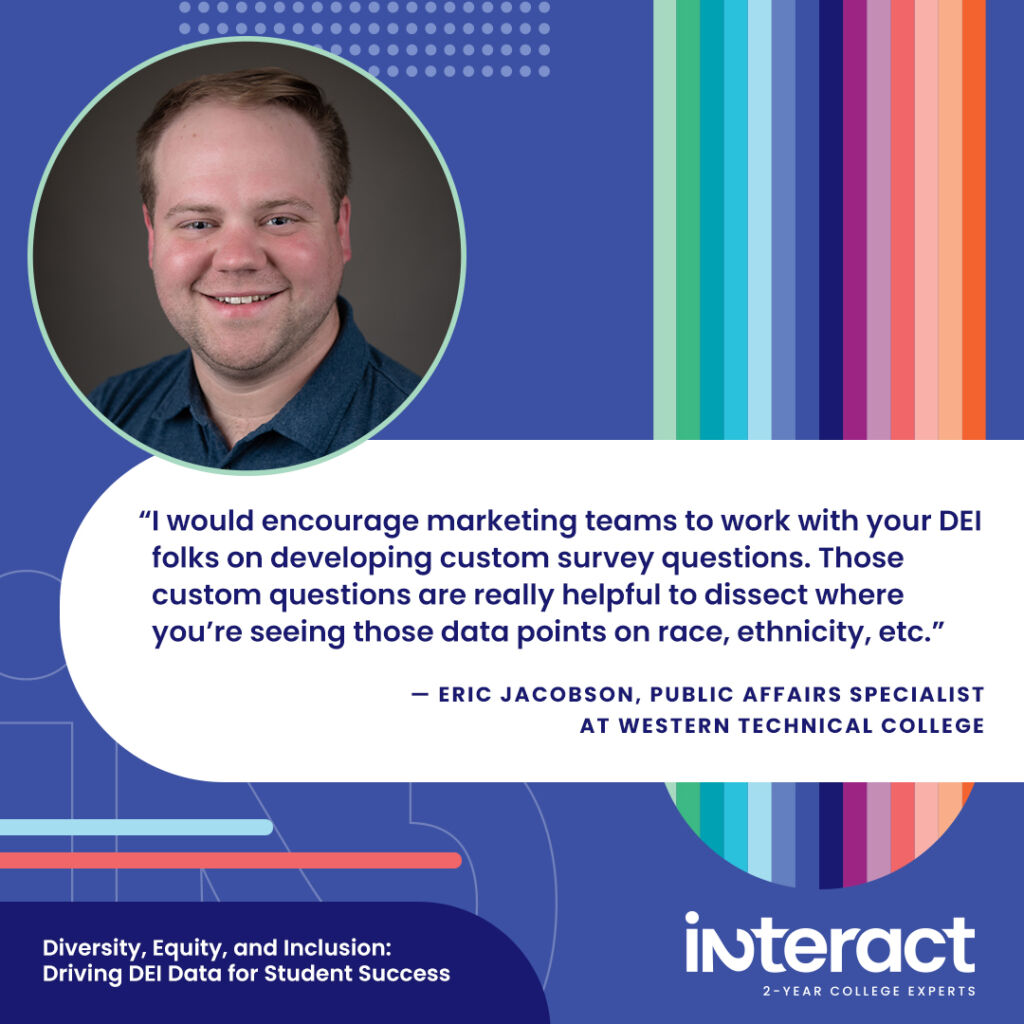
“I would encourage marketing teams to work with your DEI folks on developing custom survey questions,” says Jacobson. “Those custom questions are really helpful to dissect where you’re seeing those data points on race, ethnicity, etc.”
Want the inside scoop on boosting DEI initiatives at your school? Find out how custom Media Prefs data can help you make informed decisions.





